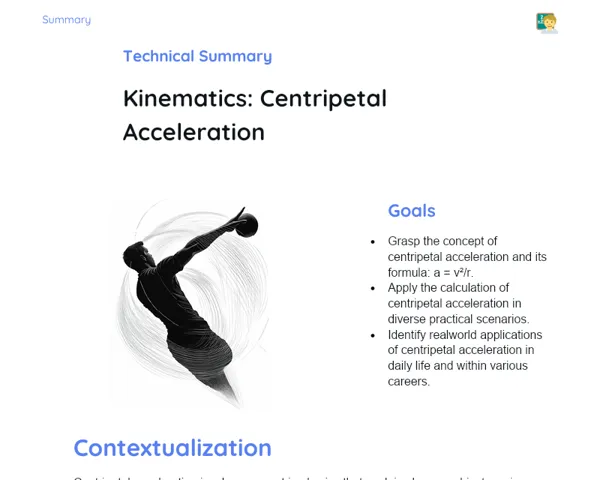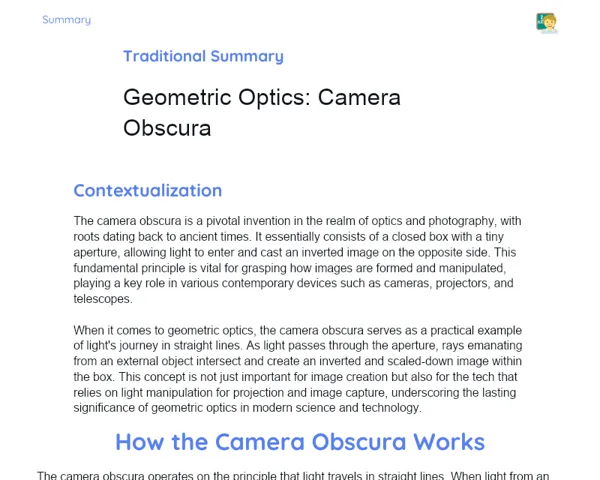Summary Tradisional | Magnetic Field: Coil
Contextualization
The magnetic field generated by coils is a key concept in physics that plays an integral role in our everyday lives. A coil consists of a conductor wrapped in multiple turns, and when electric current flows through it, a magnetic field is produced. The strength of this magnetic field relies on the number of turns in the coil, the electric current, and the material used for the core. This property enables the creation of controlled magnetic fields essential for many electrical and electronic devices.
Coils are found in a wide range of equipment, from electric motors and transformers to medical devices like MRI machines. The ability to generate specific magnetic fields is crucial in these applications, whether it's converting electrical energy into mechanical movement or transmitting electrical signals. Grasping how coils operate and the calculations related to the magnetic fields they generate is vital for developing and maintaining the technologies that enhance our quality of life.
To Remember!
Definition and Structure of a Coil
A coil is a device crafted from a conductor wound in multiple turns. The way a coil is structured allows it to produce a magnetic field when an electric current passes through it. The strength of this magnetic field is directly proportional to both the number of turns and the intensity of the electric current flowing through the coil.
Coil shapes can differ, but the cylindrical coil is one of the most prevalent, where the wire is spiralled around a cylinder. Another common type is the toroidal coil, which has a ring shape. In both instances, the magnetic field inside the coil is intensified because of the concentration of field lines.
Moreover, the core material of the coil also impacts the generated magnetic field. Ferromagnetic materials, like iron, enhance the magnetic field, making the coil more effective in applications where strong magnetic fields are necessary.
-
Composition of a coil: conductor wound in multiple turns.
-
Variation in coil shapes: cylindrical and toroidal.
-
Influence of core material on generated magnetic field.
Ampère's Law
Ampère's Law is crucial for calculating the magnetic field created by an electric current. It connects the circulation of the magnetic field along a closed path with the electric current that passes through the area enclosed by that path. The formula is expressed as ∮B·dl = μ₀I, where B represents the magnetic field, dl is a segment of length of the closed path, μ₀ is the permeability of free space, and I is the electric current.
In the context of coils, Ampère's Law assists in determining the strength of the magnetic field inside the coil. For a long coil, often referred to as a solenoid, the expression for the magnetic field simplifies to B = μ₀(N/L)I, where N is the number of turns, L is the length of the coil, and I is the electric current. This formulation is accurate for the interior of the coil, where the magnetic field is uniform and aligns with the coil’s axis.
Ampère's Law serves as one of the primary tools for analysing magnetic fields across various electric current configurations. It enables calculations of the magnetic field in different situations, from straight wires to intricate coils, facilitating a better understanding and practical application of electromagnetism concepts.
-
Connection between magnetic field circulation and electric current.
-
Mathematical expression: ∮B·dl = μ₀I.
-
Application of Ampère's Law in coils: B = μ₀(N/L)I.
Magnetic Field Inside a Long Coil
The magnetic field within a long coil, or solenoid, is uniform and parallels the coil's axis. This uniformity arises from symmetry and the high number of turns, which causes the field lines to concentrate within the coil, producing a nearly constant magnetic field.
To find the magnetic field inside a solenoid, we use the formula B = μ₀(N/L)I. Here, B denotes the magnetic field, μ₀ is the permeability of free space, N is the number of turns, L is the coil's length, and I is the electric current. This formula holds for long coils, where the effects at both ends can be disregarded.
Outside the coil, the magnetic field is significantly weaker compared to the interior due to the dispersion of the field lines. Practically, this means solenoids are employed to create strong and controlled magnetic fields in a limited space, such as in physics experiments, medical equipment, and electromagnetic control devices.
-
Uniform and parallel magnetic field along the coil's axis inside a long coil.
-
Formula for calculation: B = μ₀(N/L)I.
-
Weak magnetic field outside the coil due to the dispersion of field lines.
Practical Applications of Coils
Coils have numerous practical applications across different areas of technology and science. In electric motors, coils create magnetic fields that interact with either permanent magnets or other coils to produce rotary motion. This principle is essential for how electric vehicles, fans, and various devices reliant on motors function.
In transformers, coils facilitate the transfer of electrical energy between two circuits through electromagnetic induction. The relationship between the number of turns in the primary and secondary coils dictates the voltage change, enabling the efficient conversion of energy at varying voltage levels for distribution and use in electronic devices.
Another significant application occurs in medical devices, like MRI machines, where coils generate magnetic fields that interact with the human body to create detailed images. Coils also play a vital role in inductors, used in electronic circuits to store energy, filter signals, and stabilise currents.
-
Use of coils in electric motors to produce rotary motion.
-
Function of coils in transformers for energy transfer.
-
Application in MRI machines for generating detailed images.
-
Importance of inductors in electronic circuits.
Key Terms
-
Magnetic Field: The area surrounding a magnetic material or an electric current where magnetic forces can be observed.
-
Coil: A device comprised of a conductor wound in multiple turns, utilized to generate a magnetic field.
-
Ampère's Law: The relationship between the circulation of the magnetic field along a closed path and the electric current passing through the area enclosed by that path.
-
Solenoid: A long coil where the magnetic field inside is uniform and parallel to the coil's axis.
-
Electric Current: A controlled flow of electric charges through a conductor.
-
Number of Turns: The total quantity of loops or turns of wire in a coil.
-
Permeability of Free Space (μ₀): A physical constant describing how well free space can support a magnetic field.
-
Magnetic Resonance: A medical imaging technique that employs magnetic fields and radio waves to create detailed images of organs and tissues.
Important Conclusions
In this lesson, we delved into the magnetic field generated by coils, understanding their structure and function. We discussed how the number of turns, electric current, and core material all affect the intensity of the generated magnetic field. We applied Ampère's Law to calculate the magnetic field inside a long coil, emphasising the formula B = μ₀(N/L)I as a fundamental tool for these calculations.
Besides the theoretical aspects, we also covered practical applications of coils in electric motors, transformers, and medical devices such as MRI machines. These examples showcase the significance of coils in technologies we depend on daily—from enabling movement in motors to providing detailed images of the human body.
Comprehending these concepts is crucial for the advancement of new technologies and the maintenance of electromagnetic devices. We encourage students to investigate this subject further, as mastery in this area can lead to diverse academic and professional paths in electronics and physics.
Study Tips
-
Review fundamental concepts of electromagnetism, including Ampère's Law and the formula for the magnetic field in solenoids.
-
Practice solving problems related to calculating the magnetic field generated by coils to reinforce understanding.
-
Research the practical applications of coils in various technological devices and their impact in the real world.



